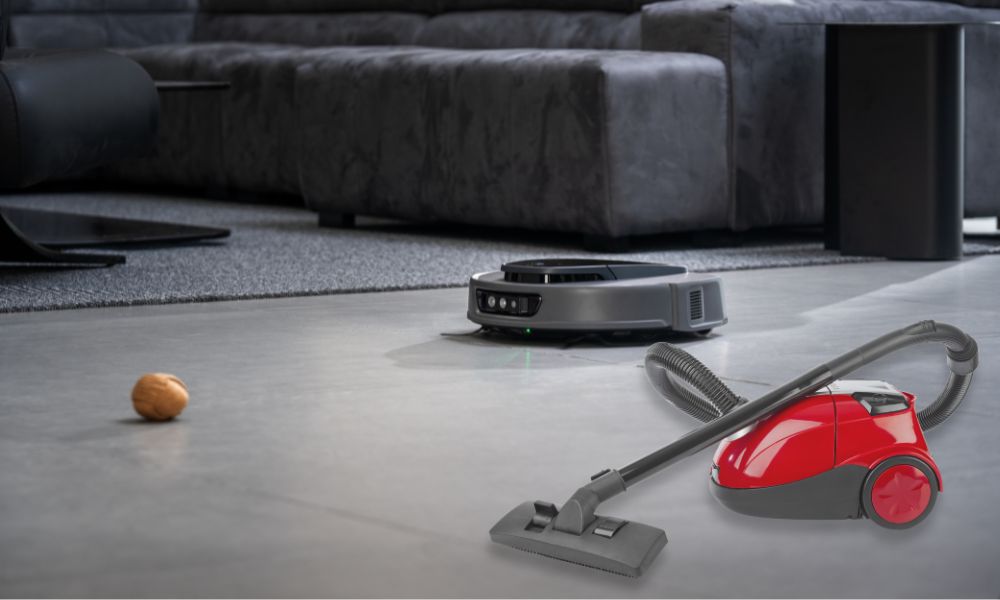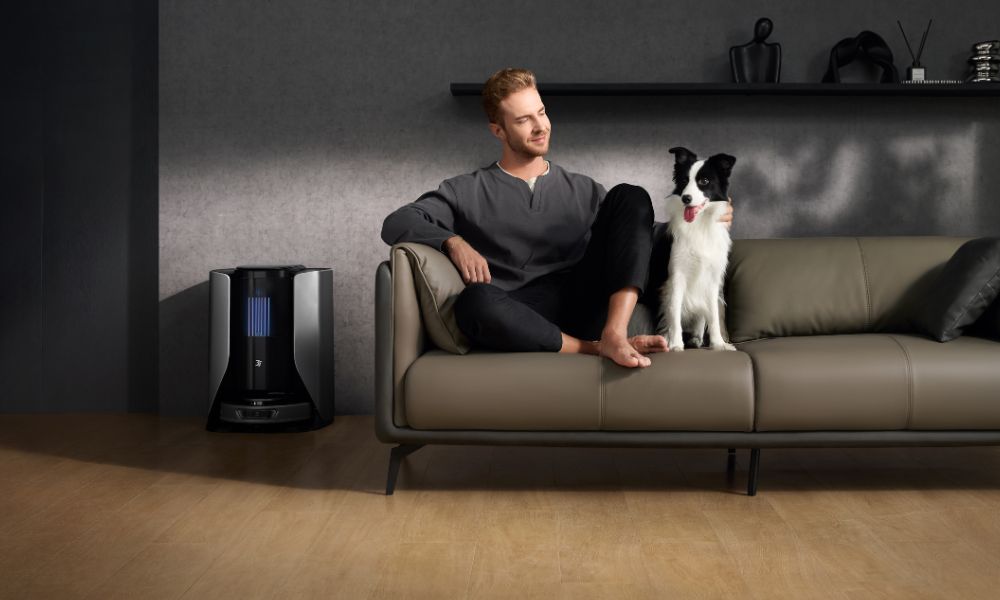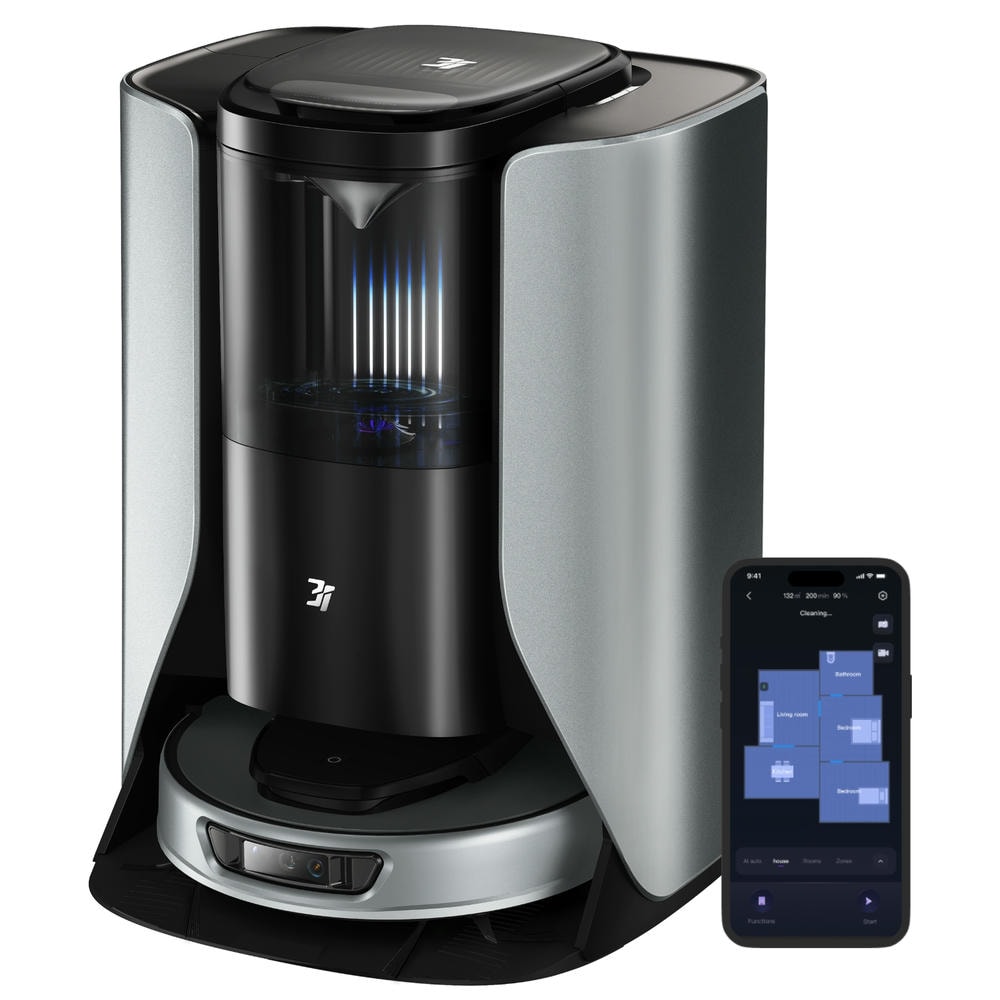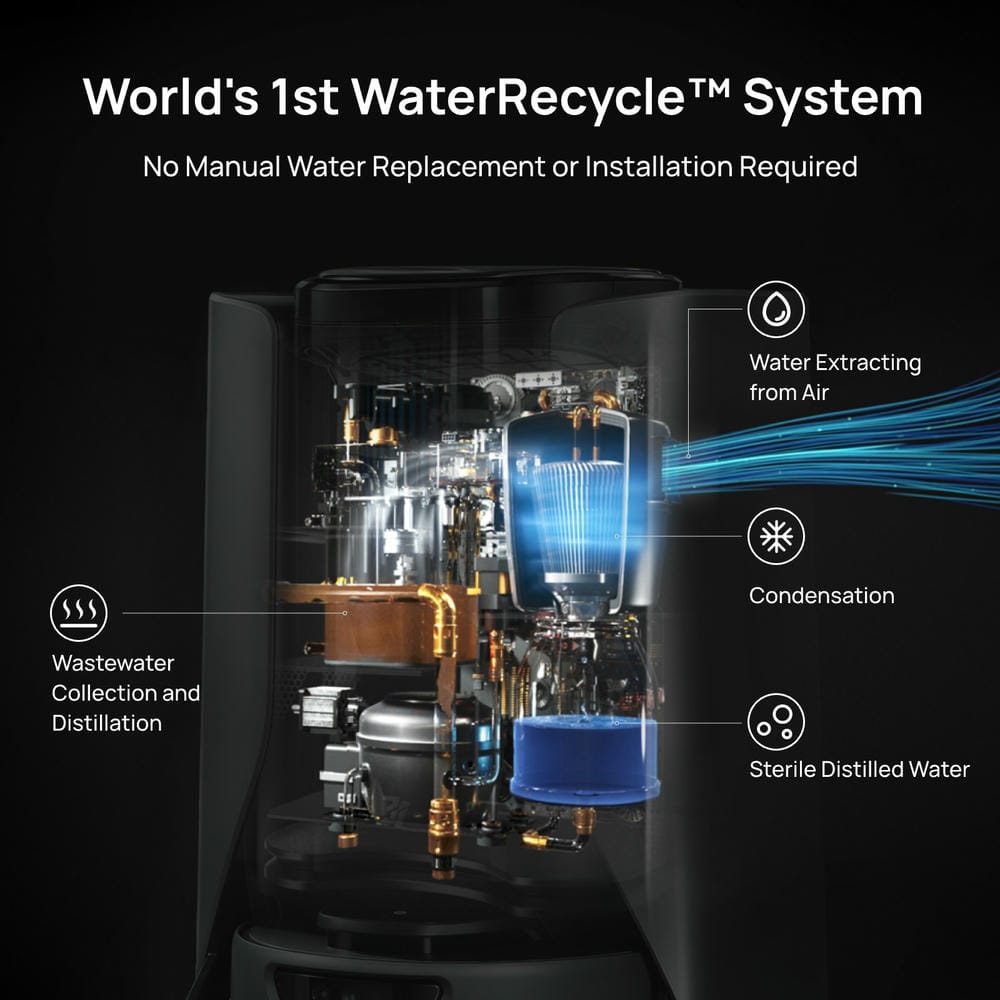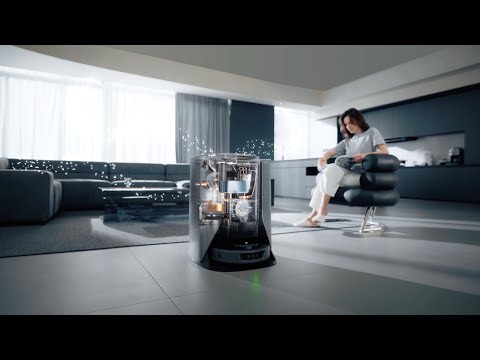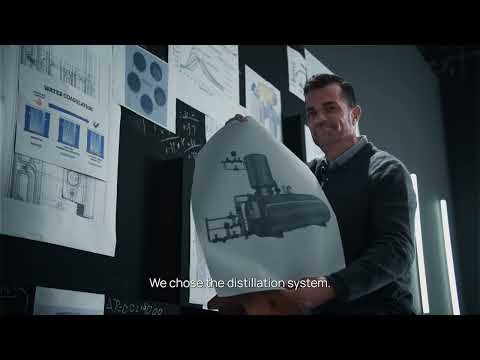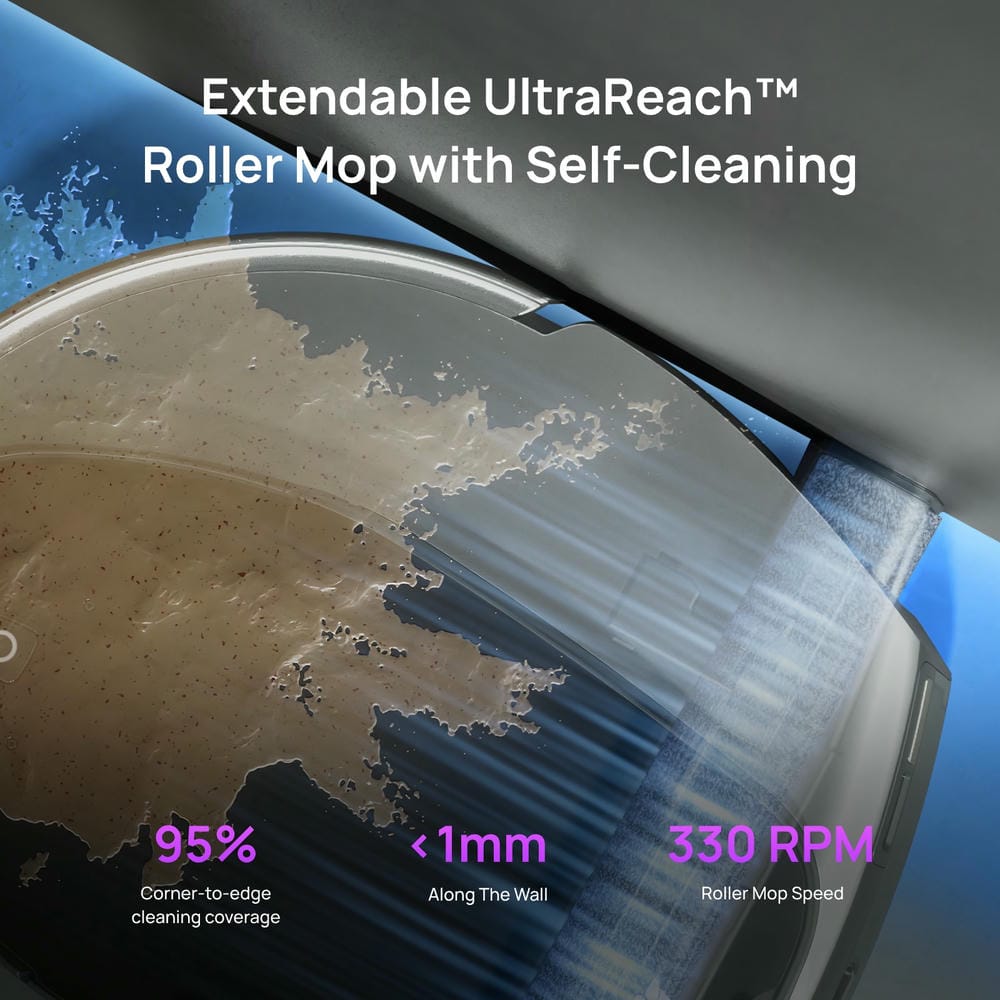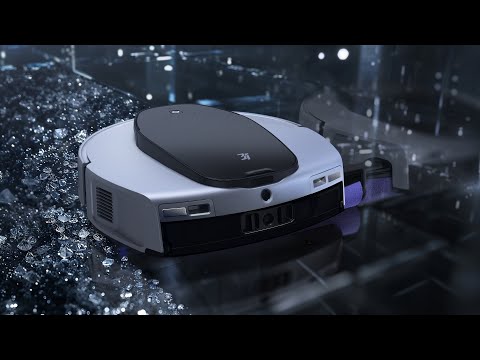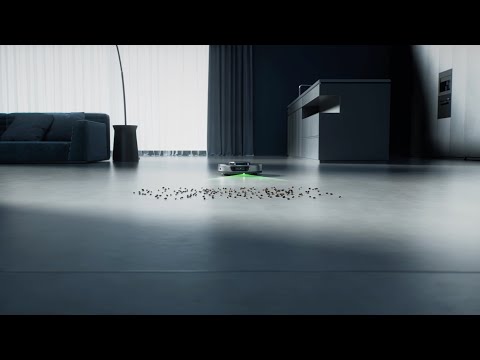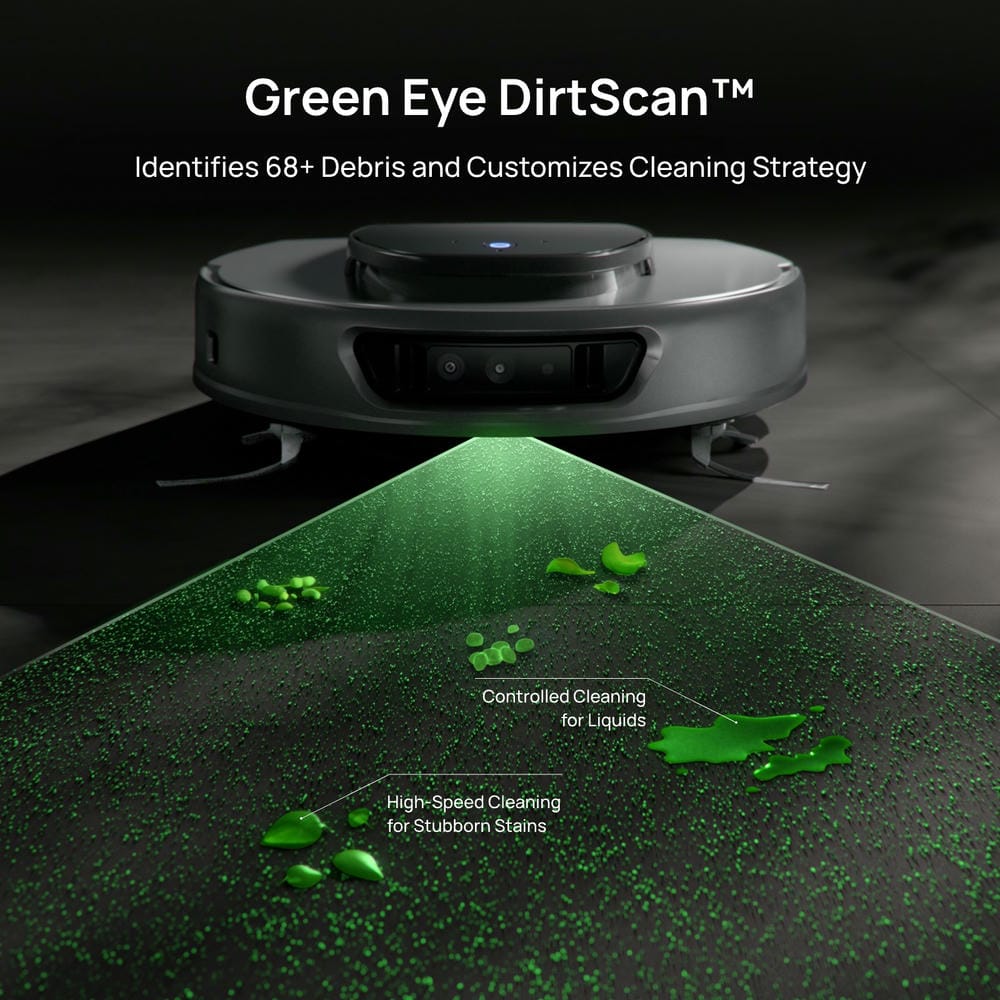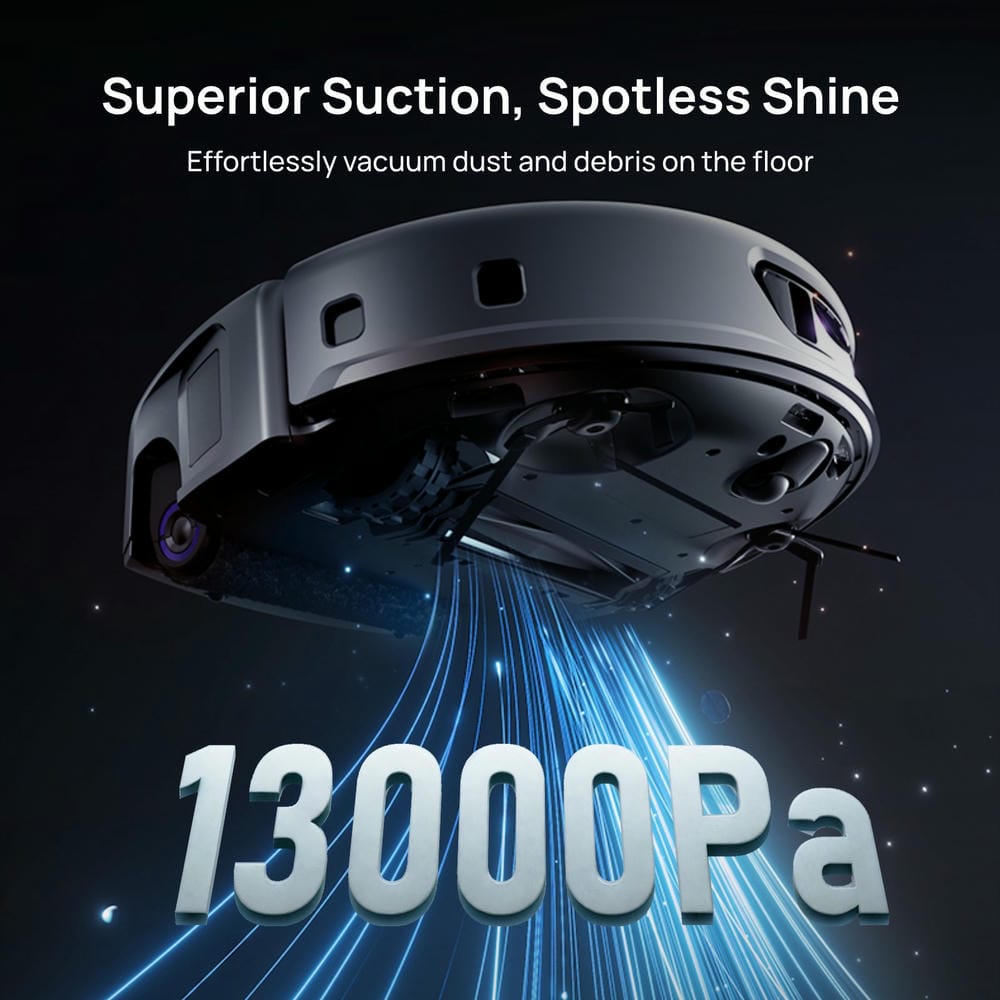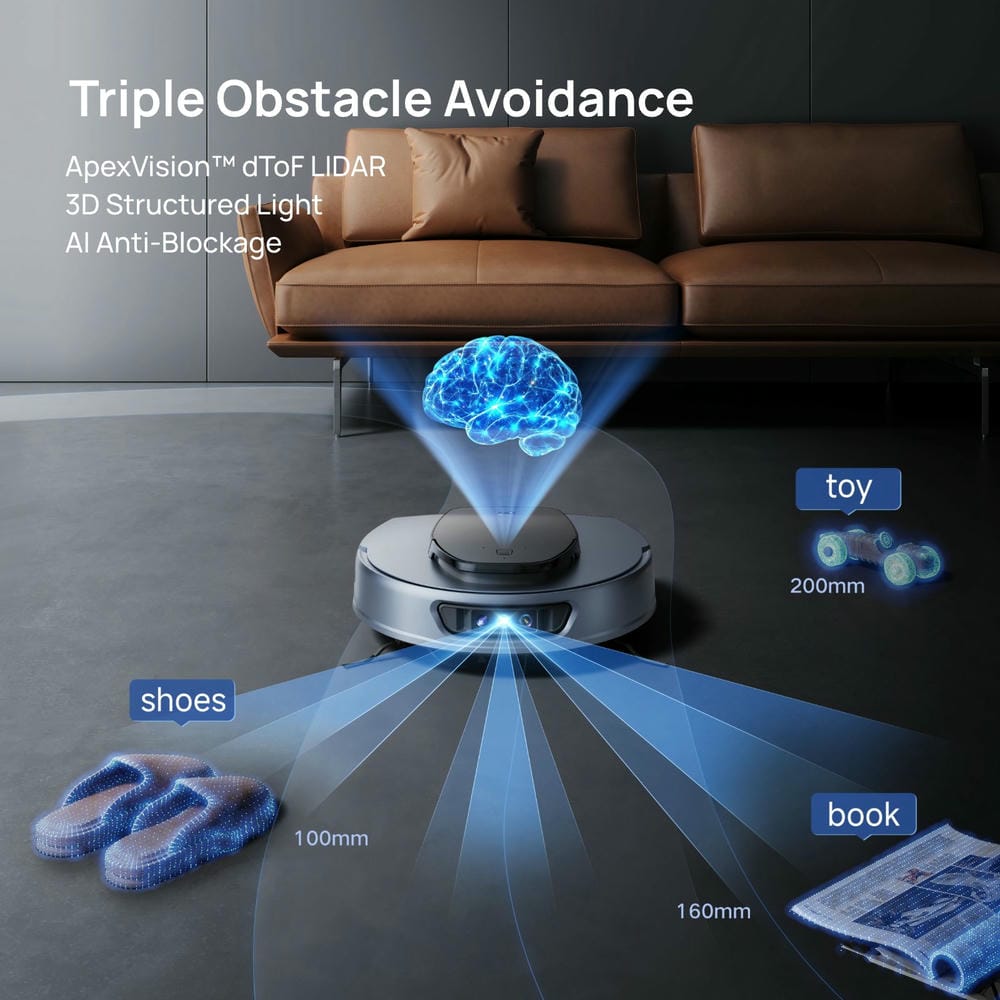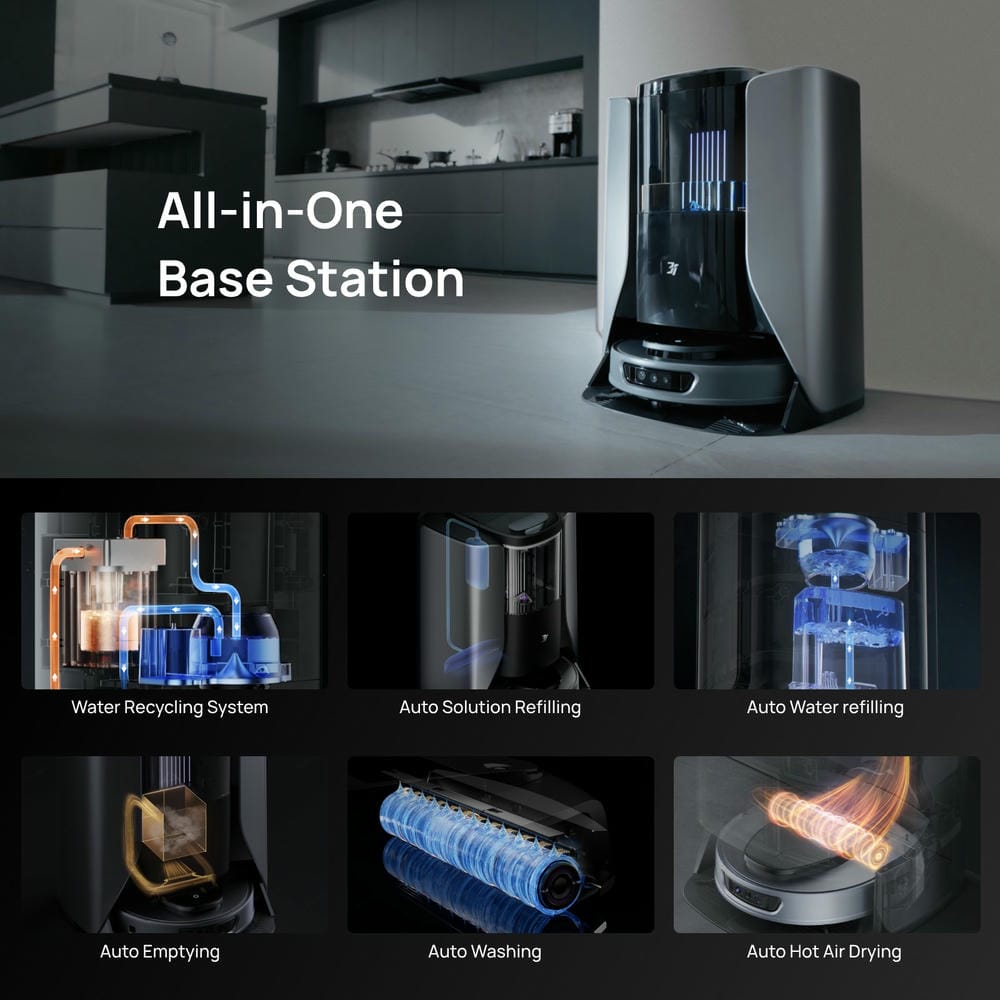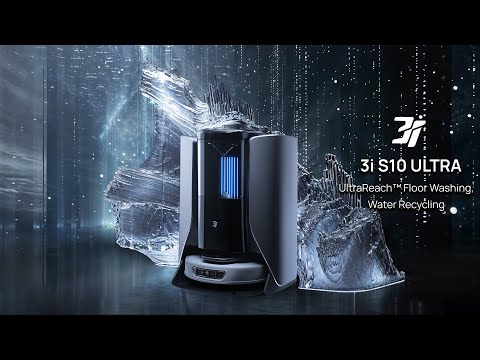Deciding between a robot vacuum and a cordless vacuum can be a difficult decision, as each has its own advantages. While a robot vacuum offers you hands-free convenience, a cordless vacuum gives you more control and versatility.
Let’s look at the main differences between the two to help you decide which is the best robot vacuum for your cleaning needs and lifestyle.
What Is the Robot Vacuum?
A robot vacuum is a smart, self-operating device that allows you to clean your floors with minimal effort. This is because it uses sensors to detect dust and obstacles and navigates around your home on its own. So you can set it to clean at a specific time, and most models automatically return to the charging station when the battery runs low.
Perfect for busy people or those with limited mobility, sweeping robots make it easy to keep your home tidy without you having to lift a finger. Plus, they work best on hard floors and low-pile carpets, making them a convenient and efficient solution for everyday cleaning.

What Is the Cordless Vacuum?
A cordless vacuum cleaner is a lightweight, battery-powered vacuum cleaner that can be moved freely without being plugged into an electrical outlet. It provides quick cleaning and can be easily taken from room to room. In addition, it has features such as a handheld unit or a retractable hose, which is perfect for cleaning stairs, furniture, and small spaces.
Its rechargeable battery usually lasts for 20 to 40 minutes, which is perfect for short, efficient cleaning. So, whether you are cleaning floors or spot cleaning, a cordless vacuum cleaner makes the job easier and more convenient.
Robot Vacuum Vs a Cordless Vacuum
Automation Level
- Robot Vacuum: Robot vacuum cleaners are highly automated, and equipped with advanced sensors and navigation systems to clean autonomously and avoid no-go areas and obstacles. They can automatically start cleaning at a set time and plan a cleaning path based on the room layout. In addition, with intelligent control, they can return to the charging station on their own, which is perfect for busy households.
- Cordless Vacuum: Although cordless vacuum cleaners are cordless, they rely entirely on manual operation. You need to move the vacuum cleaner, adjust the nozzle, and control its direction and suction power. In addition, it lacks the automatic cleaning function of self-empty robot vacuums, so it requires more input from the user, making it better for quick, manual cleaning of smaller areas.
Applicable Use Cases
- Robot Vacuum: Robot vacuum cleaners are ideal for most hard floors and low-pile carpets, and are best used in open spaces with minimal obstacles. Because they can operate independently, they may not be as effective in corners, under furniture, or in complex layouts. However, high-end models with corner cleaning functions, such as the 3i S10, can handle these tasks better.
- Cordless Vacuum: Cordless vacuums are lightweight and flexible, making them ideal for cleaning small areas like stairs, between sofas, or in cars. They allow you to easily clean hard-to-reach areas. For quick touch-ups or moving between rooms, they offer a lot of flexibility compared to robot vacuums.
Cleaning Results
- Robot Vacuum: While convenient, robot vacuums have less suction power than cordless vacuums, so they are less effective at deep cleaning. Because they are great for daily maintenance, they can easily pick up dust, pet hair, and larger debris. However, they may not be good enough for carpet cleaning or deep cleaning tasks. If you have carpets, a robot carpet cleaner might be better suited for the job.
- Cordless Vacuum: Cordless vacuums offer stronger suction power and are better for deep cleaning. Its motor and nozzle design allows for more effective cleaning of carpets, furniture, and pet hair. For areas that need thorough cleaning, especially deep pile carpets or hard-to-reach corners, cordless vacuums outperform robot vacuums.
Convenience
- Robot Vacuum: Robot vacuums are very convenient because once set up, they can clean almost completely on their own. Because they can be scheduled to clean at specific times, they return to their charging station when they're done. As a result, they're ideal for people with busy schedules or those who want to be less involved in cleaning. Also, with a quiet robot vacuum, you can run it without disturbing your family.
- Cordless Vacuum: While they don't offer automatic cleaning, cordless vacuums are extremely portable, making for quick and flexible cleaning. And since they don't need to be plugged in or out, they can be easily moved between rooms, stairs, and cars. While you need to manually control the vacuum, it's still effective for cleaning small areas and emergency messes.
Battery Life and Runtime
- Robot Vacuum: Most robot vacuums run for about 1-2 hours on a full charge, which is enough for most household cleaning tasks. Higher-end models use smart algorithms to optimize cleaning time and automatically return to the charging dock when needed.
- Cordless Vacuum: Cordless vacuums have a shorter battery life of about 20-40 minutes, depending on the suction mode and battery capacity. For large areas, you may need to charge mid-run or clean in sections.
Price
- Robot Vacuum: Robot vacuums are more expensive due to advanced sensors, navigation, and automation. Some higher-end models have additional features such as deep cleaning mode, floor detection, and smart path planning, which cost more. Therefore, you need to consider your budget and cleaning needs when choosing a model.
- Cordless Vacuum: Cordless vacuums have a wide range of prices and are more affordable than robot vacuums. Although higher-end cordless models also have powerful suction and longer battery life, the overall cost will be more affordable.
Noise Level
- Robot Vacuum: Most robot vacuums are quiet, which is great for use without disturbing family or roommates. They are also great for nighttime cleaning or for cleaning homes that require quiet operation. They are not completely silent, however, but the noise level is comparable to a standard vacuum cleaner and should not be too disruptive.
- Cordless Vacuum: Cordless vacuums tend to be louder, especially when using higher suction modes. These vacuums require more powerful motors to produce the strong suction required for effective cleaning, which results in increased noise levels. You may need to time your cleaning session to avoid disturbing others.
Maintenance Needs
- Robot Vacuum: Robotic vacuums require regular maintenance, including emptying the dustbin, cleaning the brushes, and wiping the sensors. They also require firmware updates to keep the vacuum performing at its best. Otherwise, neglecting it will affect the cleaning performance and the life of the vacuum. It's also important to check the vacuum cleaner parts regularly.
- Cordless Vacuum: Cordless vacuums also require regular cleaning, especially the filters and nozzles, to maintain suction power. You can monitor the battery life, which may need to be replaced after a few years of use. Cleaning the dust bin and checking the hose for debris will keep the vacuum running efficiently.

Which Is Better?
When choosing between a robot vacuum and a cordless vacuum, if you prioritize convenience and time-saving, a robot vacuum is ideal because it does the cleaning for you. However, if you prefer more control over cleaning tasks, especially in tight spots, a cordless vacuum offers flexibility.
Consider the layout of your home and your cleaning needs. If you have large open spaces and want to clean them with ease, a robot vacuum is a good choice. For more detailed manual cleaning, or if you have limited floor space, a cordless vacuum may be a better fit for you.
Related Reading: Can You Use a Robot Vacuum in the Bathroom?



